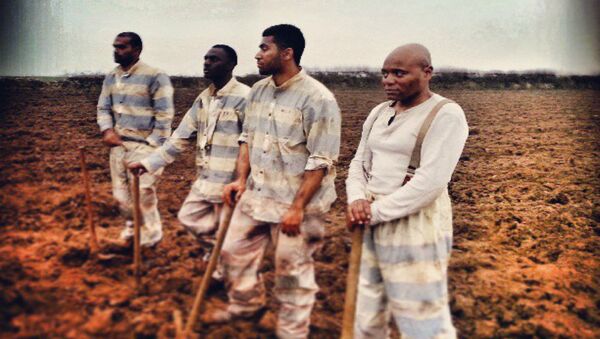On Monday, prison inmates around the United States called for a series of strikes against forced labor, broken parole systems, abusive prison policies, and solitary confinement, along with calls for better health care and generally more humane living conditions.
In Texas alone, inmates at five major prisons refused to leave their cells Monday with a letter circulating among the prisons listing a series of grievances ranging from an end to the financially-ruinous $100 medical co-pays to a call for the state to drastically downsize the state’s incarcerated population.
"Texas’s prisoners are the slaves of today, and that slavery affects our society economically, morally and politically," stated the five-page letter announcing the strike. "Beginning on April 4, 2016, all inmates around Texas will stop all labor in order to get the attention from politicians and Texas’s community alike."
The Texas strikes are part of a larger effort by a group, Support Prisoner Resistance, that is organizing planned protests and calling on every prisoner in every state and federal institution across America to "stop being a slave."
The group plans a larger nationwide coordinated action beginning September 9th to "shut down prisons across the country." The group says that if prisoners do not perform their jobs, correctional facilities will not be able to function.
Although many scoff at the group’s likening of prisoners to slaves, the reality is that local companies often rely on inmate labor that, all too often, comes with little or no pay. The Constitution of the United States does not prohibit slavery among prisoners. The 13th Amendment of the Constitution that abolished slavery states, "neither slavery nor involuntary servitude, except as a punishment for crime whereof the party shall have been duly convicted, shall exist within the United States."
Those claims are echoed by Erica Gammill, director of the Prison Justice League, an organization that works with inmates in 109 Texas prisons. "They get paid nothing, zero; it is essentially forced labor and they rationalize not paying prison laborers by saying that the money goes toward room and board to offset the cost of incarcerating them."
Judith Greene, a criminal justice policy analyst, echoed Gammill’s concerns. "If you’ve ever seen pictures of prisoners in Texas working in the fields, it looks like what it is," Greene said. "It’s a plantation: The prisoners are all dressed in white, they got their backs bent over whatever crop they’re tending and the guards are on horseback with rifles."
The Support Prisoner Resistance organization hopes to not only shed light on the similarities between the current American prison system and slavery, but also hopes that protests in Texas and nationwide will raise awareness of abuses within the US criminal justice system and the systematic stripping of constitutional rights from those who are incarcerated.
The US has by far the world’s largest incarcerated population, at some 2.2 million persons. The country has seen an astounding 500% increase in the prison population over the past thirty years, leading to facility overcrowding and an ever-growing burden on state budgets.
Another activist group, The Sentencing Project, notes that the racial disparity among the prison population is glaring. "More than 60 percent of the prison population is comprised of racial and ethnic minorities. For black males in their thirties, 1 in every 10 is in prison or jail on any given day." The Sentencing Project blames the "War on Drugs" for its disproportionate impact on America’s incarceration boom.






